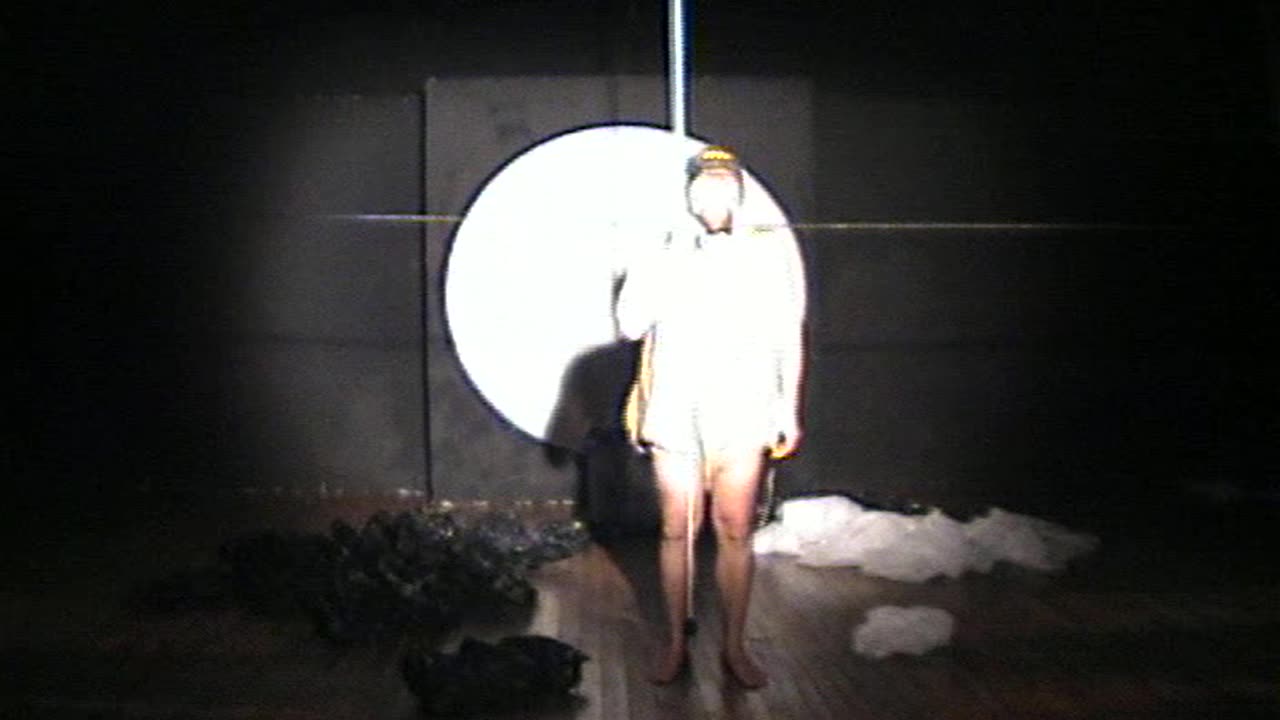Premium Only Content

Milan Kohout, David Franklin, "Flying and Flowing" 1999, 2000
Mobius theater and gallery, Boston USA and other locations, 1999, 2000.
Performance: Milan Kohout, David Franklin
Video projection: Milan Kohout, David Franklin, Jiří Dvorský
In Milan’s words:
“I created this piece in collaboration with David Franklin, another member of the Mobius Artists Group. I transferred my experience living in both collectivist and individualistic societies into this piece.
“The collectivist socialist society of Czechoslovakia, where I was born and lived for the first thirty years of my life, was based on a horizontal system of communication and socializing among mem- bers of society. Since the government controlled all the media, people themselves ensured the flow of true information through other channels ‘by hand’ and by word of mouth. Such information was spread horizontally among people, not via the media that were placed ‘above’ them. Using this sys- tem, a single physical copy of an illegal underground publication was often read by hundreds or even thousands of people. This system was very effective because lifelong permanent members of the society were also close neighbors who knew each other well.
“I entered the United States after obtaining political asylum due to my activities against the Czech- oslovakian socialist government. I found American society to be made up of atomized individuals communicating via different forms of media. Communication is not transmitted ‘by hand’ or by word of mouth, but rather through remote media channels. One issue of a particular publication targets just one niche of the society. Communication is oriented vertically by a system made up of individual information ‘droplets.’
“In this performance, we wanted to transform these differences into geometrical forms that would accompany different actions, texts and stories. All the components (sound, texts, stories, lighting, movements) of the piece were based either on vertical or horizontal composition and the tensions between them.
“In one of the pieces, David and I attempt to communicate with each other. Together, we play a dominant-position game while holding an eight-foot (2.5 meter) stick in our mouths. The stick con- nects the participants’ mouths, but also paradoxically distorts the articulation of language, making it harder for them to understand each other. In this part of the performance, there is always one person lying horizontally on the ground and another standing in a dominant position. In this way, the stick forms a 45-degree angle relative to the horizontal plane of the ground. Even when the roles are re- versed, the geometry of dominance still persists. Communication between the participants is always based on the principle of dominance.
“In another part of the piece I work with vertically- and horizontally-mounted elastic bungee cords. The horizontal cord represents mutual social bondage (cooperation, collectivism) and the vertical.
one atomization of the individual (competition, individualism). The z-axis in this three-dimensional plot reflects the social force generated by the intersection of the horizontal and vertical coordinates. I tell a story about a homeless person and a private doctor offering a free one-time medical service. I present my face at each moment of the story in a particular position in this three-dimensional matrix represented by bungee cords. I want to create a concept of real life where extremes of any sort can produce tension and pain.”
Franklin and Kohout’s essay about their performance, “Spatial Relations Speak the Language of Social Hierarchy” was included in Seenography: Essays on the Meaning of Visuality. Edited by Andrew Cope. Oxford, UK: Inter-disciplinary Press, 2014. ISBN 978-1-84888-138-9
-
 3:11:52
3:11:52
Esports Awards
4 hours agoEsports Awards: Decade Awards 2025
41.2K3 -
 1:02:58
1:02:58
Sarah Westall
2 hours agoMILITARY WHISTLEBLOWER: How Social Media Military Level Psyops are Manipulating You w/ Patrick Bergy
6.03K4 -
 30:41
30:41
Stephen Gardner
2 hours ago🔥WHITE HOUSE GETS UNEXPECTED BIG WIN!
10.4K14 -
 9:39
9:39
MattMorseTV
4 hours ago $0.31 earnedVance just DROPPED a BOMBSHELL.
10.4K45 -
 2:40:14
2:40:14
DooM49
4 hours agoThe Grind for Battlefield 6 Skins - A-10 Unlocked
672 -
 1:47:49
1:47:49
Jeff Ahern
4 hours ago $0.31 earnedThe Sunday Show!
120K4 -
 LIVE
LIVE
Spartan
3 hours agoExpedition 33, Halo Later on (Maybe)
40 watching -
 LIVE
LIVE
Meisters of Madness
2 hours agoFinals and Wuchang!
56 watching -
 LIVE
LIVE
Lofi Girl
2 years agoSynthwave Radio 🌌 - beats to chill/game to
183 watching -
 LIVE
LIVE
BBQPenguin_
4 hours agoTasking & PVP
30 watching